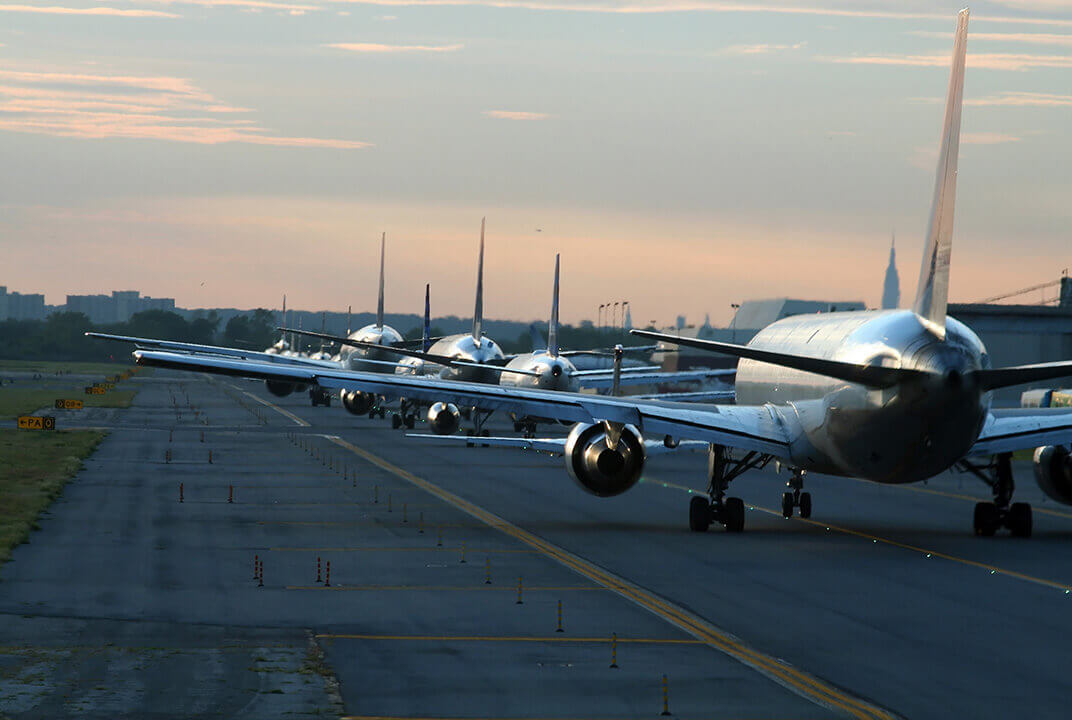Insight | Key takeaways from World ATM Congress 2019
Key takeaways from World ATM Congress 2019
null
Madrid hosted the world’s largest air traffic management event once again this year, as World ATM Congress returned to the Spanish capital between 12th-14th March 2019. The action-packed event included a range of high-calibre presentations, fantastic networking opportunities, exhibition stands from the market’s leading players, and even a couple of prestigious award ceremonies.
It was a record-breaking success, according to organisers, who confirmed more than 9,500 registrants and 253 exhibitors, arriving from 135 countries and territories around the world. In addition, there were over 250 sessions and 260 leading aviation experts as speakers… an impressive feat!
Given that, the scope of topics that were addressed at World ATM Congress 2019 was naturally very broad. In the end, although much was discussed at the various events and stands, the main issues examined were ATM capacity, how the digital revolution is causing the industry to evolve, and integration of unmanned traffic management (UTM) services.
So what were the highlights of this year’s event?
Firstly, the conference set-up worked like clockwork, as usual:
Tuesday, 12th March 2019
The conference was formally opened by the Pedro Saura García, Spain's Secretary of State for Infrastructure, Transport and Housing, who introduced the first presentation to discuss the ‘Big Picture’ in ATM globally, then visited many of the exhibition stands mingling with delegates and exhibitors.
EU Transport announced the extension of EU-US cooperation on deployment in the field of air traffic management:
EU Transport also held a discussion with the Civil Air Navigation Services Organisation (CANSO) about the importance of collaboration, integration and “digital possibilities” in ATM:
As you can see it was a busy first day of the conference.
The Inmarsat Aviation team was also busy, providing visitors to their stand with updates on key projects, including the ground-breaking Iris air traffic modernisation programme in partner with the European Space Agency (ESA).
In addition, Inmarsat Vice President, Aviation Safety and Cybersecurity, Joseph Teixeira, spoke about the role of satellites in digital aviation in the Nokia ATM Theatre.
And to top it all off, there was not one but two award ceremonies. The Single European Skies awards focused on five categories - Network performance improvement, Innovation, Sustainability and Cooperation.
The Single European Skies is an initiative of the European Commission, with the objective of modernising and harmonising Europe's airspace management, so that air traffic can increase more effectively.
The annual Jane’s ATC Awards also happened on the Tuesday evening, recognising the best projects in the ATM industry for innovation, technological, environmental, runway, enablement or equipment supply advancements. A list of the winners can be found here:
Wednesday, 13th March 2019
The second day changed focus a little, looking more at the wide-ranging topic of 'People in ATM'.
The inspirational Shaesta Waiz was the opening speaker. She is the youngest woman to have circumnavigated the globe solo in a single-engine aircraft and she shared her experiences. She then went on to explain her worthy mission to inspire the next generation of science, technology, engineering and mathematics (STEM) professionals, especially young women.
Remaining sessions went into more detail about people issues in ATM, such as recruiting and retaining women and millennials to ensure the industry has the resources it needs in future.
Inmarsat’s Director of Air Traffic Services, Lisa Bee, provided attendees with a presentation titled ‘The Power of Now: Advanced Air Traffic Services Delivered Today’.
Other topics covered, included in-depth exploration of the ATM ‘capacity crunch’ in Europe, how organisations can collaborate to relieve these issues, and how digital technology plays a vital part in the solution.
It was an exciting day for Inmarsat too, as it was announced that the ground-breaking Iris air traffic modernisation programme has completed its five year research phase and has entered the commercial implementation phase.
To coincide with the announcement, a successful media roundtable was held by Inmarsat, ESA, SESAR and ESSP, to provide over 40 participants with more insight into the updates on the Iris programme.
As the day wound down, there was even live music provided by Frequentis:
Thursday, 14th March
The final day was reserved for some discussions around the concept of SWIM (System Wide Information Management), which once implemented will change the way information is managed along its full lifecycle and across the whole European ATM system.
Spanish air navigation manager, Enaire also saved their big announcement for the final day, signing a document that specifies the measures required to implement the Single European Sky plan in Spain.
The date of the signing was also particularly significant because Enaire were commemorating their 25th anniversary of the first Local Single European Sky Implementation Plan, drawn up in 1993, where Spain was a key player.
Last but by no means least, Inmarsat was proud to participate in a walking tour with SESAR to showcase the benefits of the Iris programme and how it supports SESAR’s masterplan to modernise ATM.
All in all, it was a fantastic event and we’re looking forward to next year already. You can find photo highlights here:


